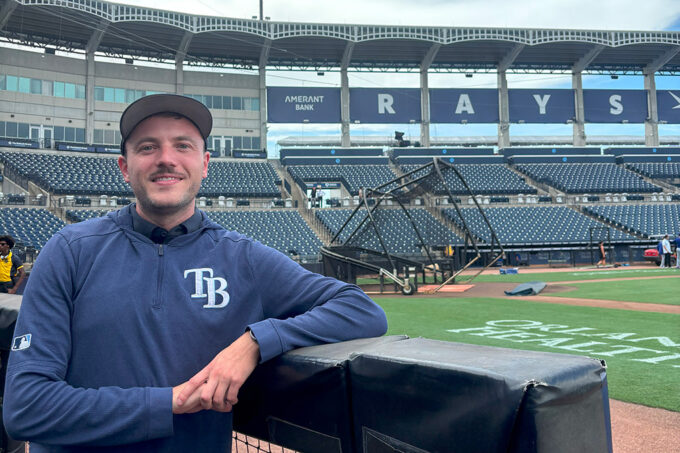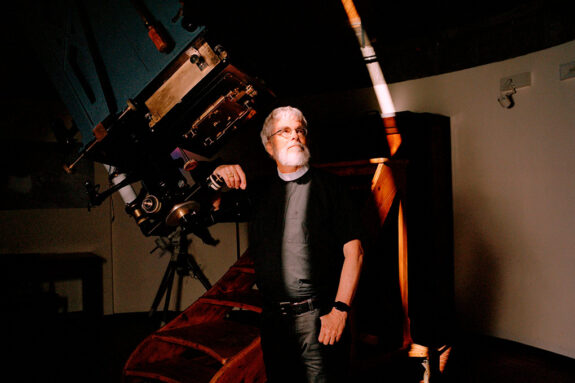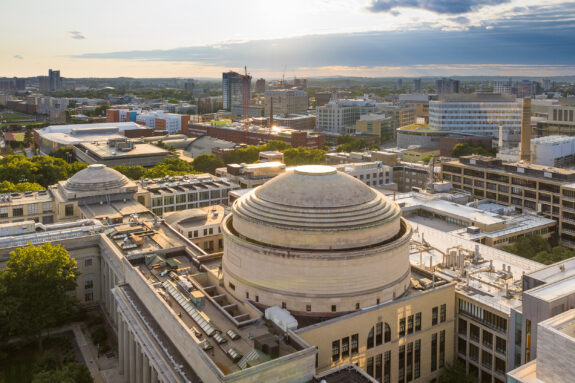Michael McClellan PhD ’18: Data on the Baseball Diamond

Michael McClellan PhD '18 uses his skills in physics and computing to help improve hitting performance of baseball players for the Tampa Bay Rays. Image credit: Isha Rahman
Baseball insiders used to say that baseball was a game of inches. For Michael McClellan PhD ’18 it’s now a game of millimeters. “Today, the gap between the highest and lowest performers is microscopic,” says McClellan, the applied physicist for baseball operations and research and development for the Tampa Bay Rays. “It could be a millimeter of difference in the point where the bat meets the ball, a fraction-of-a-degree change in the arc of a player’s swing. The margins that determine positive outcomes in this game can be extremely narrow.”
McClellan, who grew up rooting for the Kansas City Royals in Independence, Missouri, and has been with the Rays since 2018, is one of the growing ranks of scientists on staff with Major League Baseball (MLB) clubs. He focuses primarily on hitting—charting players’ batting stances, bat speed, and other aspects of their performance and then working with the coaching staff and players to improve it. “Hitting is a largely untapped research area in baseball,” he says. “With pitching, once the pitcher releases the ball, physics determines where it goes. When he chooses to change speeds or spin rates or location, he knows how these will alter the ball’s trajectory. But hitting is reactive. The hitter can adjust his swing or stance, move forward or back in the batter’s box. But he also has to react to the pitch, a pitch that is beyond his control. That’s what makes the study of hitting so exciting.”
In 2015, a year in which the Royals won the World Series and McClellan was starting the third year of his PhD in atmospheric science at MIT, he learned that John Williams, SM ’08, was working as director of research and development for the team. McClellan reached out to meet for coffee. “I’d always been interested in baseball, just as I’d always been interested in physics, engineering, and simulation modeling. Meeting with John showed me there was a path I could follow where I could pursue all these interests,” he says.
During his final year at MIT, McClellan went to spring training in Arizona and confirmed that many MLB clubs were eager to hire technically gifted people who could communicate their research findings. He has since found that the entire Rays organization supports his work. “All of our coaches and executives know that every team is using similar data to chase the same goal … to create a World Series–winning team,” he says. “But the best clubs, like ours, aren’t just interested in making players better. They want to better understand the game of baseball.”


